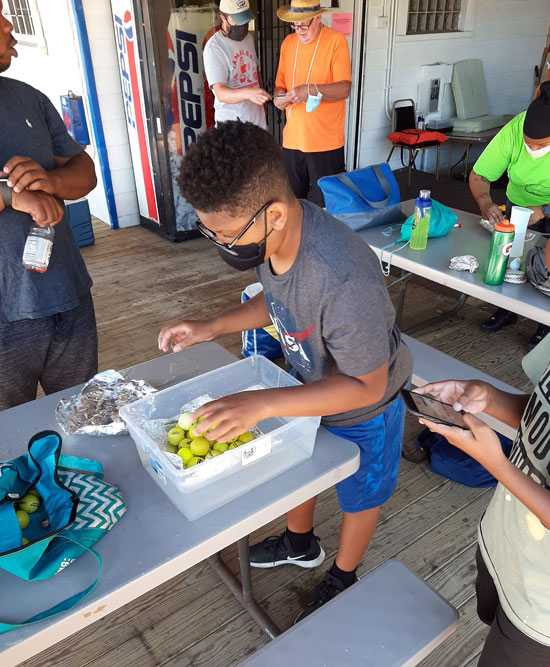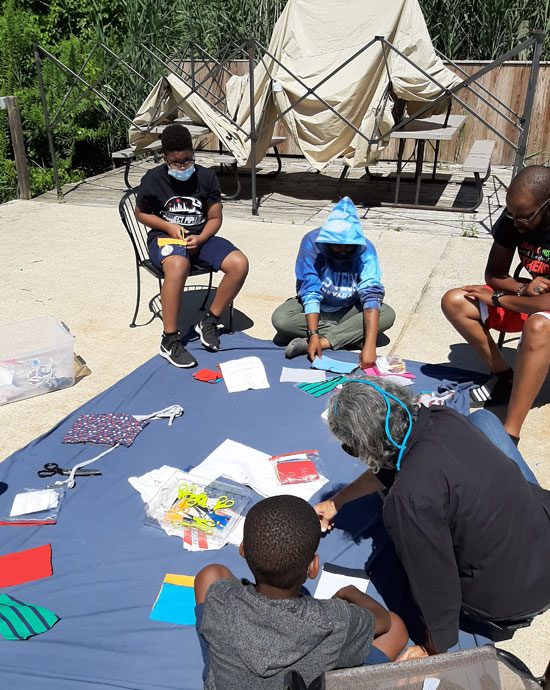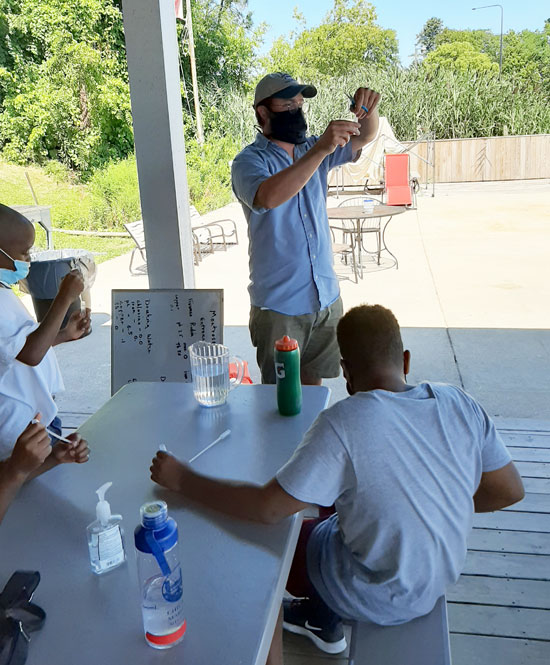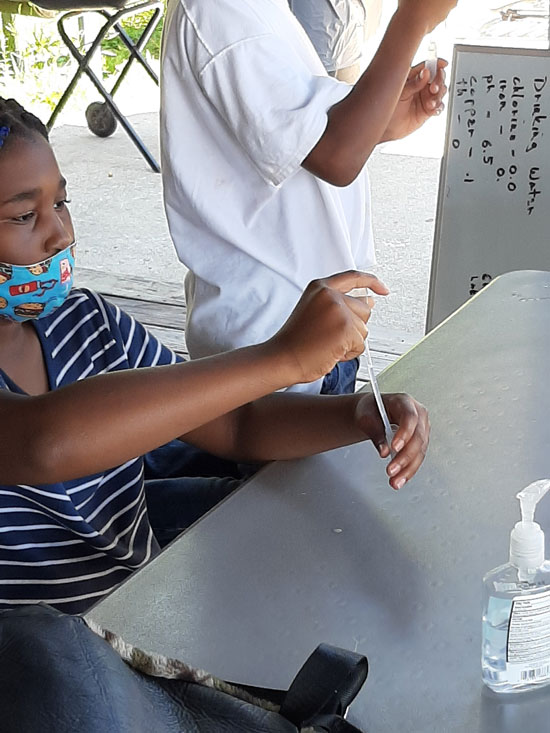The Chicago Maritime Arts Center course continues with our young mariners now having learned knot-tying and rowing skills, and with those skills, their comfort on the water has soared. Learning about displacement by loading an aluminum foil boat with golf balls has taught them how and why boats float.
Learning how to make face masks from our favorite T-shirts has taught them about self-reliance. With these newly acquired achievements, it was time to learn more about the watery world we play in and around.
As we gather on Day Three, the students eagerly practice their rope skills. Steve’s display of rope tricks yesterday, has the young mariners’ intent on learning the magic of “throwing” a figure-eight knot. After each student meets the challenge of tying a bowline, we talk about “water” and the expedition we will take today. Our journey will be to row out to the buoy on the far side of the Jackson Park lagoon and then down to the end of the furthest docks to collect water samples for testing.
We begin our introduction to ecology by gaining an understanding of the phrase “ecosystem.” I take time to explain what the word “system” means – that many parts of our environment work in harmony, and as parts work or don’t work, their interactions change the system.
One of our instructors, Jay, asks the students where the oxygen they breathe comes from, and they eagerly respond, “the trees and grass.” Jay questions, “How do the trees and grass get the oxygen?” The students answer, “They make it.” I explain that trees are nature’s best means to collect and store solar energy. Sunlight is absorbed by the leaves, while water and soil provide the nutrients that enable the tree to grow. Oxygen is one of the by-products; the wood, to build our boats, is another.
When asked, “Where does the water come from? “Lakes and rivers… and rain!” are shouted replies. “Where does the rain come from?” “Clouds and storms,” come back the response. After answers to a few more questions, we have identified our surrounding ecosystem. Sunlight hits the ocean, plankton in the ocean photosynthesizes oxygen and evaporation creates clouds. Clouds roll over land, condense and the moisture falls as rain. Rain washes the soil, quenches the trees and plants and allows them to grow and make oxygen. The water runs off the land into the rivers and lakes and then flows back to the ocean. This circle of life is a “system” – our “ecosystem.” We explain that when humans disrupt the system with bad actions, we change the system and change the environment, Our young scientists already understand the problems attendant to climate change.
After identifying parts of the ecosystem around the harbor, we board our boats and head out on our expedition to collect the water samples we will then test after lunch. The excitement of going farther afield in the boats is enhanced by the additional aim of learning more about water.
After a fine lunch, Jay dives into water sampling. We set up each student with a test kit while Steve tabulates the findings. After dipping test strips in tubes of water from the buoy, the farthest away dock, the closest dock and the tap, the young scientists conclude the water we sampled is very similar to tap water. But why you wouldn’t drink the water in the lagoon is made abundantly clear — we aren’t testing for bacteria, only acidity, hardness, and iron in the water. We explain how water, captured by the Chicago Water System from Lake Michigan, is filtered and treated to make it safe for human consumption before it flows in pipes to your house.
It’s inspiring that these young minds have developed an understanding of boats, knots and the ecosystem in which they thrive, all in just a few days.
I’ll be back wIth more soon. Again, if you want to help us at Chicago Maritime Arts Center, here is the link… https://www.chicagomaritime.org/donate-1
PREVIOUS REPORT: Day 1 – CMAC Boating Skills & Ecology Program




